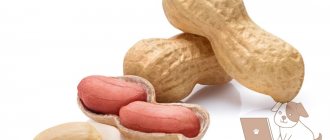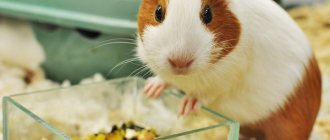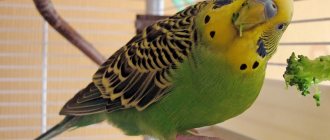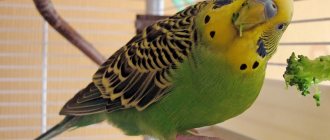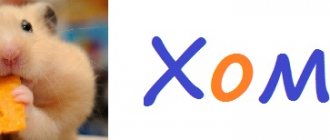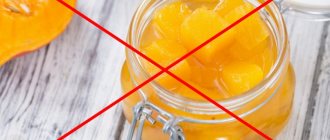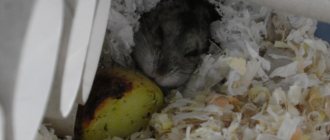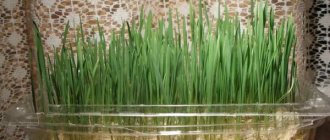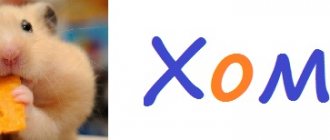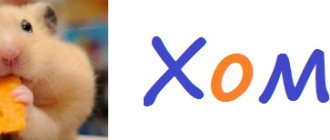- home
- Nutrition
23.03.2018
A hamster's diet plays an important role in its later life. You need to know what you can feed before purchasing a pet. Today we will find out what vegetables and fruits can be given to hamsters.
Vegetables
Vegetables are very healthy by nature, they have a lot of vitamins and fiber. But not everyone is suitable for the diet. Some can cause negative reactions in the body or even provoke an allergic reaction. Therefore, when creating a menu, be extremely careful.
Every day you can give:
- Carrots and peppers. They contain microelements that will greatly help in the prevention of age-related diseases. The high acid content will help weakened immunity.
- Peas and beans. They will give the hamster huge reserves of protein with vitamin B. They improve metabolism. Lots of other vitamins and minerals.
- Squash and cucumbers. They will restore the amount of fluid in the body, the peel will provide vitamins and microelements.
There should also be other vegetables on the menu, but there is no need to overdo it so as not to harm your pet. Pumpkin products can be given very rarely due to the higher amount of sugar.
What is it strictly forbidden to feed?
Regular cabbage or its stalk can cause diarrhea. Horseradish will consume a lot of water. If you include heads of garlic and onions in your menu, the chance of allergies will increase. Regular potatoes cause stomach problems, but they can be given boiled. When feeding, you need to chop everything very finely. Store in a cage for a maximum of six hours.
Can a hamster have tangerines, oranges and other citrus fruits?
We all love tangerines and oranges, and we even enjoy adding lemon to tea. Looking at a hamster sitting in a cage and gnawing buckwheat, you can’t help but think - maybe give the hamster a tangerine? It is tasty and healthy. Let the little animal be happy. It’s a pity that few people think about whether hamsters can eat tangerines and citrus fruits in general?
- Useful vitamins in tangerines and oranges
- Why should you not give your hamster tangerine and orange?
- Why should you not give your hamster lemon and lime?
- Can a hamster have nectarine?
- Can a hamster have a mango?
- Can hamsters eat pineapple?
Fruits and berries
Pets love this treat. Some people think that feeding them is dangerous, but this is not true if you dose everything!
For feeding, we first take into account the breed of the hamster. Nutrition also depends on genetic predisposition. The Syrian hamster breed needs to include berries in the menu. Djungarians often suffer from diabetes. Fruits and dried fruits are allowed only in rare cases and in small pieces.
Feeding citrus and exotic fruits is strictly prohibited. They cause anaphylactic shock. A fatal outcome is quite possible. Never serve fruits and berries with seeds or twigs.
Pear and apple fruits are allowed. They contain vitamins and fiber. Plums, peaches and mangoes can be given after peeling and cutting. Overripe products should not be offered. Bananas are given only as a reward. Give watermelon and melon no more than once every two weeks without seeds or peel.
Berries include grapes, raspberries, cherries, and strawberries. Include even dry ones in the diet, but without seeds. The Syrian hamster can eat up to three berries every seven days, but the dwarf hamster can eat only one. The berries contain many substances that will make the coat beautiful, smooth and shiny. Replenish vitamin reserves and slow down age-related changes.
The list of prohibited fruits and berries includes: kiwi, oranges, avocados.
What fruits should you not give your hamster?
It is worth considering that not all fruits are equally beneficial for hamsters. Among the variety of fruits, there are many that are not recommended for rodents. If you feed a hamster a forbidden fruit, it can not only harm him, but also lead to his death.
Dangerous fruits for hamsters:
- Mango;
- Avocado;
- Persimmon;
- Kiwi;
- A pineapple;
- Lemons;
- Tangerines;
- Oranges;
- Coconut;
- Figs;
- Feijoa.
In nature, hamsters do not eat exotic fruits, so the gastrointestinal tract of rodents is not able to digest them. Citrus fruits contain large amounts of vitamin C, which can lead to hypervitaminosis. Citrus fruits also contain a large amount of organic acids that irritate the gastrointestinal tract.
Dried fruits
Contain a huge amount of sugar. Feed in small quantities and very rarely! Syrian pets are given a piece of prunes and dried apricots 2-3 times a week.
But for Djungarians, dried pieces of less sweet fruits are recommended.
Grapes, raisins and corn can be fed only on the condition that dried grapes are not overfed and the corn is not canned.
Recommendations for feeding hamsters
Don't overfeed hamsters.
Just because you see your food bowls ready doesn't mean they need to be refilled. Hamsters are energetic and constantly moving animals, and therefore have a fast metabolism.
However, this does not mean that you should give them food without interruption. Remember that hamsters can get fat too. Ideally, one tablespoon of commercial hamster pellets per day is enough and a few tiny pieces of treats can be added.
There is no set rule regarding when to feed hamsters. For some, it's best to feed them in the morning so they can have snacks throughout the day. For others, night feedings are ideal for the hamster's nighttime activities.
2. Choose suitable food for hamsters.
It is better to use small bowls because large bowls promote overeating and take up too much space in the cage. Place the bowl away from your hamster's bathroom to avoid bacteria contamination.
How to prepare food?
Everything should be of the first freshness. Cook the food for up to ten minutes. Salt is prohibited; hamsters are not allowed spices. Everything should be fresh. If food is stale, it should not be given under any circumstances. In such supplies, tissue begins to rot and bacteria multiply. You may be poisoning your hamsters without knowing it. Moreover, you should not cut off part of the moldy fruit and give the rest to the animal. In the best case scenario, your pet will end up with diarrhea. You can offer only washed products.
How about little tangerine slices?
Hamster and mandarin
Mandarin orange is also a very acidic citrus fruit, and even if you give your hamster a small slice, it can still have a negative impact on his well-being. Try to provide a varied diet for your hamster so that he feels good and lives a long, happy life next to you. In addition to a specialized food formula from a pet store, you can also give your pet safe treats that will balance his diet and make him healthier.
Syrian breed
The most common and no less intriguing type. Easy to train. Maintenance is not difficult. It has four toes on the front toes and 5 on the back. The largest of all types of domestic hamsters. Mainly has a golden color. An adult reaches a length of twelve centimeters. The body is plump like everyone else. In everyday life, animals often reach twenty centimeters. Males weigh one hundred twenty grams, and females one hundred and forty. Individuals twenty centimeters in length reach a weight of two hundred grams.
When leaving, the main factor is peace of mind. Under no circumstances should you take your pet out of its cage when there are many people in the room. The noise scares him, he begins to get nervous, and may bite or get sick.
Is it possible to feed hedgehogs milk?
These babies do not have the enzyme in their body that breaks down lactose. If you offer a hedgehog cow's milk, he will, of course, drink it, but will soon begin to suffer from indigestion. Sometimes hedgehogs experience food poisoning and diarrhea.
Moreover, cow's milk contains antibodies that can simply destroy the body of a small animal. So says Moscow Zoo zoologist Alexey Turovsky. However, the specialist notes that this does not apply to goat or dog milk.
The zoologist explains the killing effect of cow's milk on hedgehogs by the fact that in natural habitats such food is completely excluded for them. “In order not to make the animal worse, you should not feed it at all,” Turovsky says about hedgehogs. The zoologist claims that any wild animal, if it is healthy, is able to feed itself.
“The generally accepted opinion that hedgehogs are hungry and want to eat is a misconception,” notes the zoologist. In summer, hedgehogs really have no problems with food. However, in early spring, these animals still need food.
In this case, hedgehogs can be fed with available food: cat or dog food, raw eggs, boiled sausage, tomatoes, lettuce, apples, carrots, pears. If possible, the hedgehog should be given fresh, cool water in a bowl after feeding.
Probably, each of us at least once in our lives, either in the village, or on TV, saw a cute, fluffy, prickly baby hedgehog drinking milk from a saucer. This composition cannot help but touch you.
However, if you decide to give your children joy and have such a cute pet at home, then you should know everything about the diet of these animals, including, for example, whether hedgehogs can drink milk.
Scientific information about hedgehogs breaks all stereotypes about these animals. So, from an early age we drew hedgehogs with an apple, pear or mushroom on their needle-like back. Therefore, it is surprising to learn that hedgehogs do not actually eat mushrooms and apples; these animals are carnivores by nature and prefer to eat meat and insects.
Living in the wild, the hedgehog happily eats snails, caterpillars, various beetles, and earthworms.
Therefore, when a hedgehog moves into the house, the owners need to make sure that its usual diet changes only on a minor scale. If it is not possible to supply the hedgehog with cockroaches, crickets or (what a nightmare) mice, then the hedgehog should be treated to fresh fish, boiled liver, raw and boiled meat. From this food, which is familiar to people, a hedgehog is also able to take the useful microelements and substances necessary for its existence.
Also, hedgehogs will not turn their nose up at a carrot or an apple. But the most favorite treat for a hedgehog is milk. On the Internet, among the tips for feeding a hedgehog at home, it is recommended to treat the prickly one with bread soaked in milk.
But can hedgehogs actually drink milk or should they be fed milk-soaked bread?
Most zoologists answer this question that hedgehogs can drink milk, but only goat or sheep milk. Cow's milk should not be given to hedgehogs. The thing is that cow's milk contains antibodies that kill hedgehogs. In addition, hedgehogs are deprived of the ability to break down lactose; they do not have a special enzyme for this. Drinking cow's milk can not only cause an upset stomach in a hedgehog, but also lead to the death of the animal.
Even though hedgehogs, like many other animals, are milk drinkers for its taste and smell, they should not be given milk because in the wild milk is not a component of their diet.
Thus, so that your pet does not get sick and lives happily ever after, try to feed it food familiar to its body from meat and insects and indulge it less in sweets, which include cow’s milk.
Can hamsters have watermelon or melon?
The negative impact of some melons on the body of rodents is extremely high, so giving watermelon and melon to hamsters is strictly prohibited.
Both products consist almost entirely of water, so eating them can cause severe diarrhea for hamsters. In addition, when growing them, various chemicals are often used, which can lead to serious poisoning or even death of a small pet.
Scientists have concluded that it is best to offer hamsters dried melon and watermelon. You can do the same with watermelon and melon seeds, which must be thoroughly washed and dried before feeding. True, all these treats are allowed to be given in very small doses.
Product table: what Djungarian hamsters can and cannot eat
Important! Even permitted products must be given with special frequency; to find out more, read the article to the end.
| You can give | Can't give | With caution or in small quantities |
| GRAINS | ||
| Oats | Pasta | Rice |
| Corn | Bakery products | Buckwheat |
| Wheat | Legumes: (peas, beans) | Lentils |
| Barley | ||
| Rye | ||
| SEEDS AND NUTS | ||
| Sunflower | Brazilian nut | |
| Pumpkin | Almond | |
| Linen | Pine nuts | |
| Cashew | Cherry, apricot pits | |
| Sesame | Acorns | |
| Walnut | Chestnuts | |
| Hazelnut | ||
| Peanut | ||
| VEGETABLES | ||
| Eggplant | Watermelon | Cucumber |
| Broccoli | Melon | Tomato |
| Zucchini | Potato | Radish |
| Carrot | Cabbage | Celery |
| Radish | Onion | Asparagus |
| Turnip | Garlic | Cauliflower |
| Beetroot (not sugar) | ||
| Pumpkin | ||
| Jerusalem artichoke | ||
| FRUITS | ||
| Apple | Persimmon | Apricot, plum |
| Pear | Citruses (orange, grapefruit, lemon) | Peach, nectarine |
| Banana | Exotic fruits (pineapple, kiwi, mango) | |
| BERRIES | ||
| Barberry | Honeysuckle | Grape |
| Hawthorn | Elder | |
| Cowberry | ||
| Pitted cherry | ||
| Strawberries and wild strawberries | ||
| Raspberries | ||
| Sea buckthorn | ||
| Rowan | ||
| Currant | ||
| Rose hip | ||
| GREENS, HERBS | ||
| Tops of carrots, beets | Sorrel | Parsley |
| Any salad (iceberg, corn) | Conifer branches | Dill |
| Clover | ||
| Nettle | ||
| Dandelions | ||
| Plantain | ||
| Leaves and branches of fruit trees (apricot, cherry, apple), other deciduous trees (birch, rowan, alder). | ||
| PROTEIN PRODUCTS | ||
| Cottage cheese 1% | Sausage | Boiled white fish |
| Low-fat white yogurt | Raw meat or fish | Peeled boiled shrimp |
| Boiled egg (chicken/quail) | Milk | Gammarus, daphnia |
| Boiled lean meat: beef, rabbit, turkey, chicken (breast). | Cheese | |
| Mushrooms | ||
Common sense will tell you what to feed your dwarf hamster at home.
Food should not contain SALT, SUGAR, SPICES, be too fatty or fried.
Any food from the human table is prohibited, but especially confectionery (cookies, ice cream, chocolate, kozinaki, honey, muesli).
What vegetables can be included in your pet's diet?
Perhaps we should start with the fact that the habitat of hamsters in the wild is the steppes; accordingly, the main food of a hamster is cereals and legumes, that is, solid and roughage with a small liquid content. The animal consumes juicy foods, such as berries, fruits or vegetables, only occasionally, when it can get them, and only in the warm months, since in winter, for obvious reasons, this kind of food is not available to the animal.
It is from these considerations that you should proceed when forming the diet of your little pet: wet food should be given to the hamster little by little, as a treat, and not as the main type of food, which should consist of cereals or grain mixtures, hay, ready-made granules of various protein supplements, for example, dried gammarus. The second rule that should be mentioned before moving on to a specific list of permitted products is that when determining which of them is useful for a hamster and which is harmful, you cannot rely on the desires of the rodent itself.
Important! Animals, like people, tend to eat with a huge appetite exactly what is actually contraindicated for them.
Nature regulates this problem very simply: over many centuries of evolution, the animal’s diet is formed taking into account the food actually available. However, in the case of a pet, all responsibility for selecting products suitable for the animal’s digestive system falls entirely on its owner. Having understood the two principles mentioned above, it becomes much easier to create a list of treats acceptable for a hamster to eat.
At a minimum, those items that are absolutely inaccessible to a rodent in nature, that is, all kinds of exotics, should be excluded from this list. Each vegetable offered to your pet must be fresh, seasonal and, if possible, organic (grown in your own summer cottage or purchased from a trusted farmer), since nitrates and other chemical additives that store-bought agricultural products may contain are definitely contraindicated for a hamster’s weak stomach .
With due attention and gratitude, the rodent will treat vegetables close to the region of its habitat, such as:
- beet;
- carrot;
- celery (white root)
- zucchini;
- squash;
- cucumbers;
- tomatoes;
- radish;
- radish;
- turnip;
- Bell pepper;
- pumpkin;
- eggplant (only fully ripened);
- Jerusalem artichoke;
- cabbage (Chinese, cauliflower, white cabbage, broccoli);
- corn (fresh or boiled, popcorn is also acceptable, but neutral - neither sweet nor salty).
Despite the fact that hamsters simply adore all of these vegetables, the safe amount of each of them in a hamster’s diet is not the same. So, only carrots and radishes can be used as a daily treat; all other foods should appear on the pet’s menu no more than 1-2 times a week. Moreover, the list of acceptable and prohibited vegetables (this also applies to fruits and berries) is not strict and absolute.
Did you know? A hamster can carry a load equal to one fifth of the animal’s own body weight in special bags behind its cheeks. The volume of reserves that this rodent makes for the winter is impressive: up to 90 kg per individual.
Some hamster owners constantly use many types of products as treats for their pets, claiming that rodents digest such food well, while other experts insist that it is pure poison for the animal. The above applies, for example, to cabbage, tomatoes and eggplants. In the end, everyone can make a decision for themselves, but it still doesn’t hurt to be careful.
Hamsters can eat vegetables both raw and boiled, but in the latter case the product should only be lightly boiled, and in no case should salt be added to the water. In addition, your pet's holiday treat may contain fresh greens, for example, arugula and other types of salads, asparagus shoots, dill, parsley, spinach or meadow herbs (alfalfa, burdock, clover, dandelion, nettle, plantain, wheatgrass, knotweed, etc.).
And, of course, it wouldn’t hurt to pamper your pet with legumes well known to its wild ancestors - peas, both dry and fresh, beans, lentils or, in fact, beans. It is permissible to pre-soak such products in water, although even without this precaution the hamster’s strong teeth will handle the treat perfectly.
Video: what vegetables can be given to hamsters
Choosing dry food
The diet of jungarians consists of 80-90% dry food. The hamster should receive it every day, this is the basis of the diet. Djungarian hamsters eat little (about a tablespoon of food per day), which means you shouldn’t skimp on store-bought formulas. Let's consider several brands of proven products:
Food for dwarfs
Versele-Laga "Prestige Mini Hamster Nature"
The completely balanced composition, in addition to grains and seeds, contains dried vegetables, fruits and nuts, a protein component and yeast as a source of vitamins. If your pet is prone to obesity, you need to manually select pineapple and raisins.
Chika-Bio "Food for Djungarian hamsters"
Domestic food, not inferior in quality to imported analogues, but more affordable. The size of the food particles and the ratio of ingredients are selected specifically for feeding jungarians.
Food for hamsters of any type of excellent quality
JR Farm Hamster
It has high palatability: dungarians feed by eating the entire food, rather than choosing individual tasty components. The “chips” of the food are a variety of protein sources (mealworms, chicken, tiny fish), the prebiotic inulin, which improves digestion, and yucca extract, which reduces rodent odor.
Vitakraft Menu Vital
Usually used for Syrians. The downside is that honey is added to the mixture to improve the taste. The diet of Djungarian hamsters involves limiting sugars.
Fiory Criceti
For dzhungariks, this food does not contain enough protein, and you will have to manually select appetizing, but harmful honey granules.
Cunipic
This food is characterized by a relatively poor composition.
Vitapol and Lolo pets
It is better to store hamster food not in a bag, but pour it into a glass jar with a tight lid. The mixtures are complete: you can give your Djungarian hamster only dry food for a long time. The reason to diversify the diet is the special physiological status of the animal: growth period, pregnancy and lactation, mating time for the male.
On our website you can learn about the correct feeding regime for a hamster. These are important rules that can protect your pet from obesity and poisoning.
Why should you stop feeding these fruits?
Therefore, to the question whether hamsters can have tangerines, oranges, lemons and other citrus fruits, there is only one answer - absolutely not. Let's justify this opinion:
- Firstly, citrus fruits have a very high content of vitamin C. And since the hamster’s body can synthesize it on its own, eating a tangerine or orange can lead to an excess of this substance, resulting in hypervitaminosis.
- Secondly, the high content of organic acids, in particular citric acid, affects tooth enamel, destroying it. And in tiny rodents, the teeth are covered with enamel on only one side.
- Thirdly, the acid contained in citrus fruits irritates the mucous membranes of the intestines and stomach, which can lead to serious illnesses, since the digestive system of rodents is very delicate.
- Fourthly, eating a tangerine or orange can cause an allergic reaction, so you should not experiment on an animal.
Don’t look for exceptions - all citrus fruits are dangerous for the tiny rodent’s body!
Therefore, do not expose your pet to pointless risks. Offer him a piece of apple, carrot or pumpkin seeds as a treat.
Prohibited foods can be deadly
The list of what is prohibited is very extensive; in fact, there are much more prohibited products than can be covered in one article. But the list of what can be given to Djungarian hamsters from food is also impressive, so there is no point in experimenting with unsafe products. The ban may seem unreasonable, but there is always a reason.
Risk of poisoning
Some food that is familiar to us is real poison for the Djungarians . Almonds and apricot kernels contain hydrocyanic acid, watermelon accumulates nitrates, honeysuckle and elderberry cause suffocation and cramps. Potatoes may contain solanine. The problem is the small size of the animal and its sensitive body. Even a microscopic dose of a dangerous substance can cause intoxication.
Cause constipation
Any astringent products (persimmon) slow down intestinal motility due to the high content of tannins. Constipation is very dangerous for rodents.
Causes diarrhea
Foods that irritate the digestive tract or have a laxative effect should not be given to dwarfs. This is hot ginger and any spices that are found in human food (paprika, salt).
Cause fermentation
Intestinal bloating leads to the death of the rodent in a matter of hours. Foods that cause gas include cabbage, brown bread, and beans.
Too fat
The rodent's liver is not able to cope with foods that are too fatty. Even seeds, which are what Djungarians can eat, are given in moderation, and foods such as oil and fried foods are completely excluded. Avocado contains too much fat.
Cheek pouches hurt
Sometimes the product itself is not dangerous. But given the small size and habits of the pet, it causes problems. Dry pasta should not be given to your dwarf hamster, not because wheat is dangerous, but because it can injure its cheek pouches by stuffing spaghetti there.
Abscesses and inflammation of the sac are a serious problem that requires treatment. Owners, faced with such a nuisance, even first peel the seeds from the husks before feeding the jungarians.
Allergy risk
Essential oils, brightly colored fruits, vegetables and berries can cause allergies. If after eating strawberries your hamster’s eyes run, the skin turns red and itches, it should be excluded.
Sometimes a product is prohibited for several reasons: cheese is both salty, fatty and rich in lactose, which is very difficult to digest.

